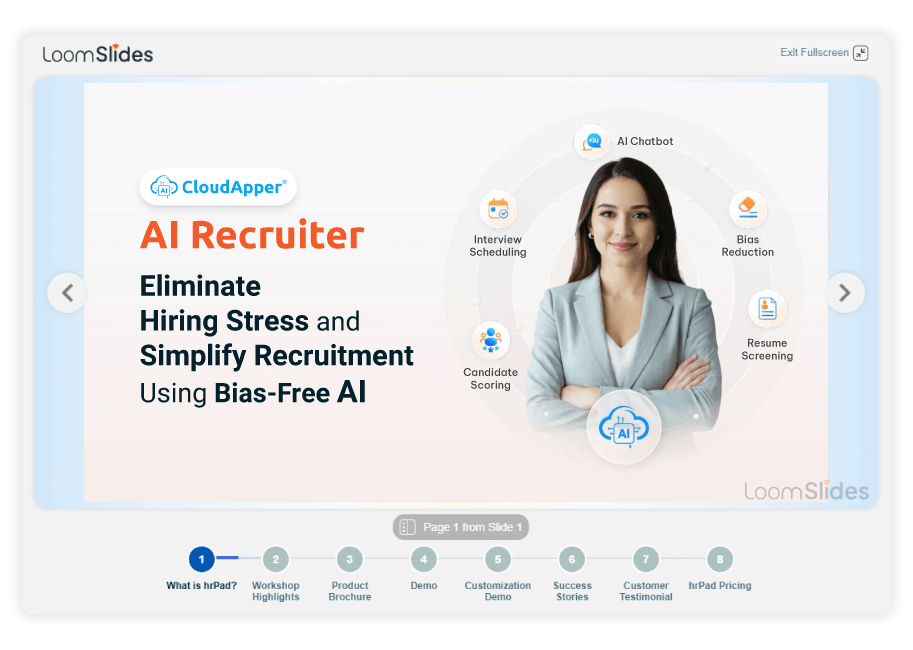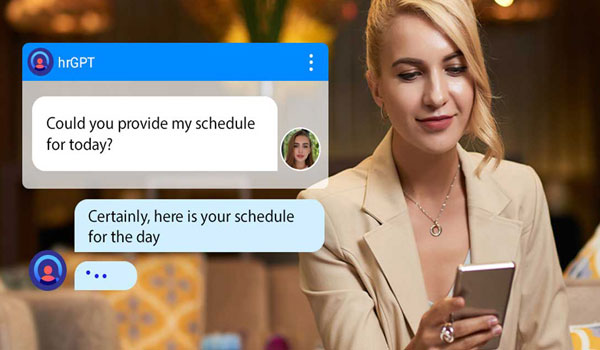Healthcare employee referral programs work best when simple. CloudApper AI Recruiter for UKG lets staff refer in seconds via email or SMS, guides candidates with a chatbot, delivers complete profiles to recruiters, and boosts hiring speed, candidate quality, and retention.
Table of Contents
In 2025, 34% of referred applicants get hired, compared to just 2–5% from job boards[1]. Even better, referral hires stay 70% longer than non-referral hires[2]. For hospitals and clinics struggling with staffing shortages, that’s a huge advantage.

For more information on CloudApper AI Recruiter for UKG visit our page here.
The challenge isn’t convincing anyone that referrals work—it’s making the process easy enough that employees actually do it. That’s where CloudApper AI Recruiter for UKG comes in. It gives healthcare organizations a more efficient way to run an employee referral program, removing the hassle of forms, back-and-forth emails, and constantly chasing recruiters for updates. The result? More referrals, better candidates, and less effort for everyone.
TL;DR:
- Referral hires convert ~34% and stay 70% longer than job board hires
- CloudApper AI Recruiter makes referrals simple with Email/SMS + chatbot
- Recruiters save time while employees feel empowered to refer
- A streamlined employee referral program improves healthcare hiring results
How Employee Referral Works with CloudApper AI Recruiter + UKG
Instead of bogging employees down with complicated steps, CloudApper AI Recruiter makes employee referrals something they can do in seconds. Here’s how the flow works inside UKG:
Step 1: Employee Sends a Referral
An employee sees an open job and wants to recommend someone. They click the role, type in their colleague or friend’s Email or phone number, and hit send. That’s it—the heavy lifting is done by the system.
Step 2: Candidate Gets an Invite
The candidate instantly gets an Email or SMS with a chatbot link. No waiting for recruiters to reach out, no confusion about what to do next.
Step 3: Chatbot Guides the Candidate
The chatbot walks the candidate through the process and starts pre-screening the candidate. It collects their details, verifies licenses or certifications, and even asks role-specific questions. For the candidate, it feels like a simple guided chat instead of a pile of paperwork.
Step 4: Recruiter Gets a Complete Profile
By the time the referral reaches you, everything is neatly structured. You’re not chasing missing documents or sending reminder emails. You have a ranked list of the best-fit candidates, so you can focus on the decision-making part of recruiting.
How Healthcare Recruiters Benefit from an Efficient Referral Process
Better Candidate Quality
Your staff know who will succeed on the floor. They’ve seen firsthand the pace, stress, and demands of patient care. When they refer someone, it’s usually a strong fit. That improves the candidate quality in your healthcare hiring pipeline right from the start.
Faster Hiring Cycles
Referrals move quickly. Candidates respond faster, and with AI in healthcare staff recruitment handling reminders, screening, and updates, you spend less time stuck in admin and more time moving people toward interviews.
More Engaged Candidates
A candidate referred by someone inside the organization is already motivated. Add chatbot guidance and regular updates, and you’ll see fewer people dropping out halfway through the process.
Stronger Retention
Hiring is one challenge—keeping people is another. Referral hires are proven to stay 70% longer, which means less turnover and more stability for your teams. For healthcare, where staffing shortages are constant, that’s a game-changer.
Less Busywork for Recruiters
When the system takes care of invites, reminders, and gathering documents, you’re free to focus on what matters: talking to candidates and making smart hires. No more chasing updates or piecing together incomplete applications.
Why This Matters for Healthcare Organizations
Healthcare recruitment is tough. Between patient care demands, compliance requirements, and constant staffing needs, you can’t afford a clunky referral process. A streamlined employee referral program turns your staff into an extension of your recruiting team.
Employees get a simple way to recommend people they trust. Candidates get a guided process that feels easy and welcoming. Recruiters get structured applications without wasting hours on manual follow-up. That efficiency adds up to stronger teams, faster hires, and lower turnover.
Conclusion
Referrals are proven to deliver better hires who stick around longer. But the key to success isn’t just knowing that—it’s making the process simple enough for everyone to use. With CloudApper AI Recruiter for UKG, healthcare organizations can finally run an employee referral program that works at scale.
Employees refer in seconds, candidates apply without friction, and recruiters get more high-quality applicants with less effort. If you want to make healthcare recruitment faster, smarter, and more reliable, contact us today.
Data Source:
- https://www.eqorefer.com/annual-reports/the-state-of-employee-referral-programs-in-2025-key-insights-benchmarks
- https://www.aag.health/post/healthcare-employee-referral-statistics
Frequently Asked Questions
-
How do referrals work with CloudApper AI Recruiter?
Employees select an open role in UKG, enter the candidate’s email or phone, and the system sends a chatbot link. The chatbot collects details and creates a complete profile for recruiter review.
-
Does this integrate with UKG without changing workflows?
Yes. It operates inside UKG, leveraging your existing jobs, users, and permissions—no extra portals or duplicate data entry required.
-
How does it reduce admin for recruiters?
Invites, reminders, status updates, and document collection are automated. Recruiters receive structured profiles, cutting back-and-forth emails and manual follow-ups.
-
What information does the chatbot capture for healthcare roles?
Work history, licenses, certifications, shift availability, and role-specific pre-screening responses. Fields are customizable to your clinical and non-clinical needs.
-
What outcomes can hospitals expect?
More employee participation, faster time-to-interview, better candidate quality, and higher retention—along with clear metrics on referral conversion and source performance.

















